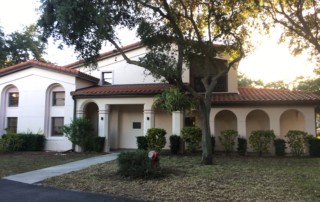A roof doing it’s job is usually out of sight, out of mind. We don’t often think about the roof over our head – until, of course, something goes wrong.
Roof leaks are dreaded by homeowners, worried that they may have a pricey roof replacement to deal with. But staying vigilant in regards to roof leaks may extend your roof life, and allow you to fix the problem with a simple repair.
How to Detect the Source of Roof Leaks
Most roof leaks are detected when they break through into your interior. You may notice dark staining on a ceiling, a few drops forming on a wall or ceiling, or a damp area on your rug. However, just because you find water intrusion in one place does not mean that the roof leaks are directly above it.
Water tends to run downhill, and to find points of least resistance. Therefore, once you notice a leak, you may have to trace it back to find the origination of the leak.
Here are a few tips to not only help you to find the source of the leak once it occurs, but also to help you to catch the leak before it intrudes too far into your house.
- Inspect your Roof Regularly: Roofing contractors recommend that you perform a roof inspection at least once a year. You should look for any broken or cracked tiles, or curling, missing, or eroded shingles on an asphalt roof. Also inspect gutters and soffits. Should there be a roof leak, the chances are excellent that it is originating from a compromised area on the roof which is allowing water intrusion.
- Climb into the Attic: If you have access to your attic, you may be able to determine roof leaks early. Check to see if there is any stained framing, or if the eaves are wet after a storm. From that vantage point, you may be able to trace the track of the water, in order to best identify the point of entrance. If you suspect a leak, position yourself in the attic during a heavy rainstorm, and see if you see signs of roof leaks when the rain is the heaviest.
- Trace the Roof Slope: When you spot a leak, check to see if it is located on a slope, or at the bottom of your roof grade. The damage may very well be at the top of the slope and running down to a vulnerable point of entry.
- Simulate a Rain Storm: If you prefer not to wait until the next downpour to figure out where the leak is occurring, have a family member of friend help you and “create” a weather event. After determining one or two points of likely intrusion, run a water hose directly on the spot. If no drops appear inside, move up the slope slowly until you can determine where the water is seeping in. Remember, being on a roof can be very dangerous, so be careful and do not attempt if you do not feel confident doing so.
- Call a Professional Roofer: Having a professional help you to determine the source of the problem is your easiest – and safest – way to deal with roof leaks. An annual inspection can not only ensure that your roof is leak-free, but that it will enjoy its longest possible life.
Roof leaks don’t necessarily mean roof replacement, but they should be dealt with immediately upon detection.
Delaying repair may cause much worse damage down the road; after all, it is far easier to repair a few shingles than to have mold in your walls! Let the experts at [company_name] help you to keep your Venice roof healthy for decades.



